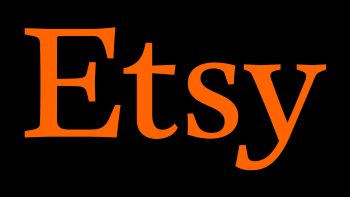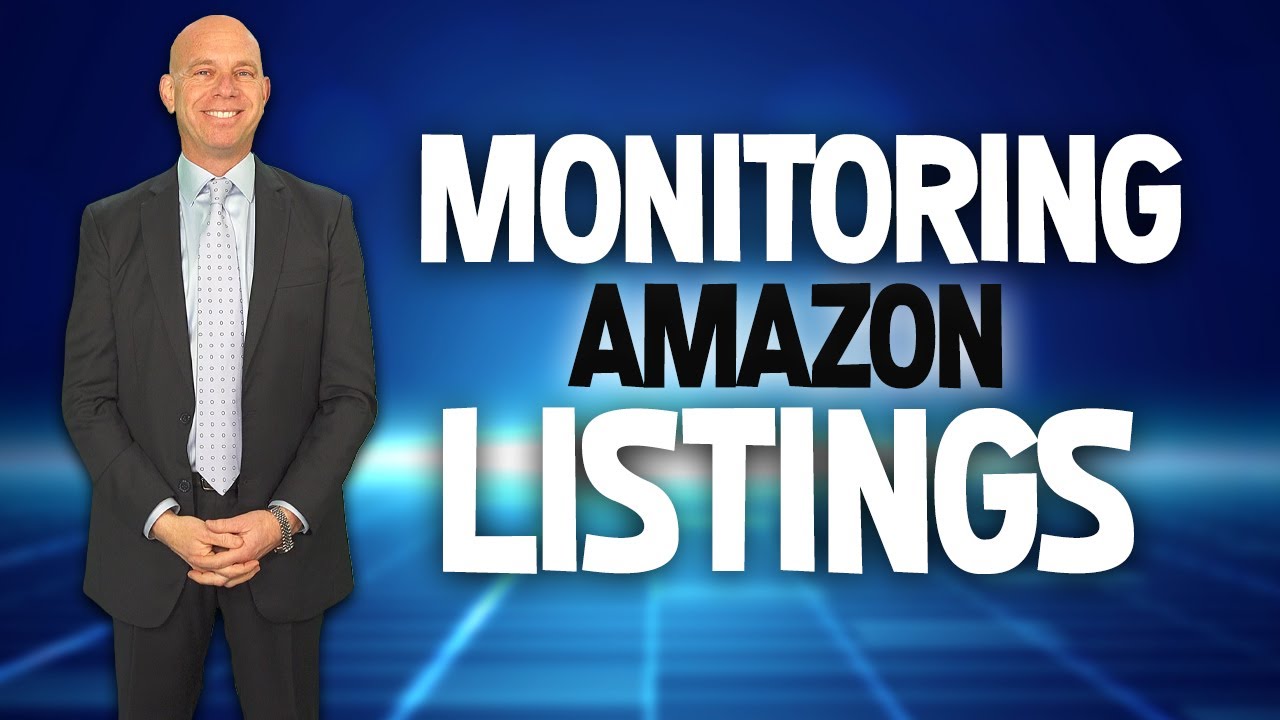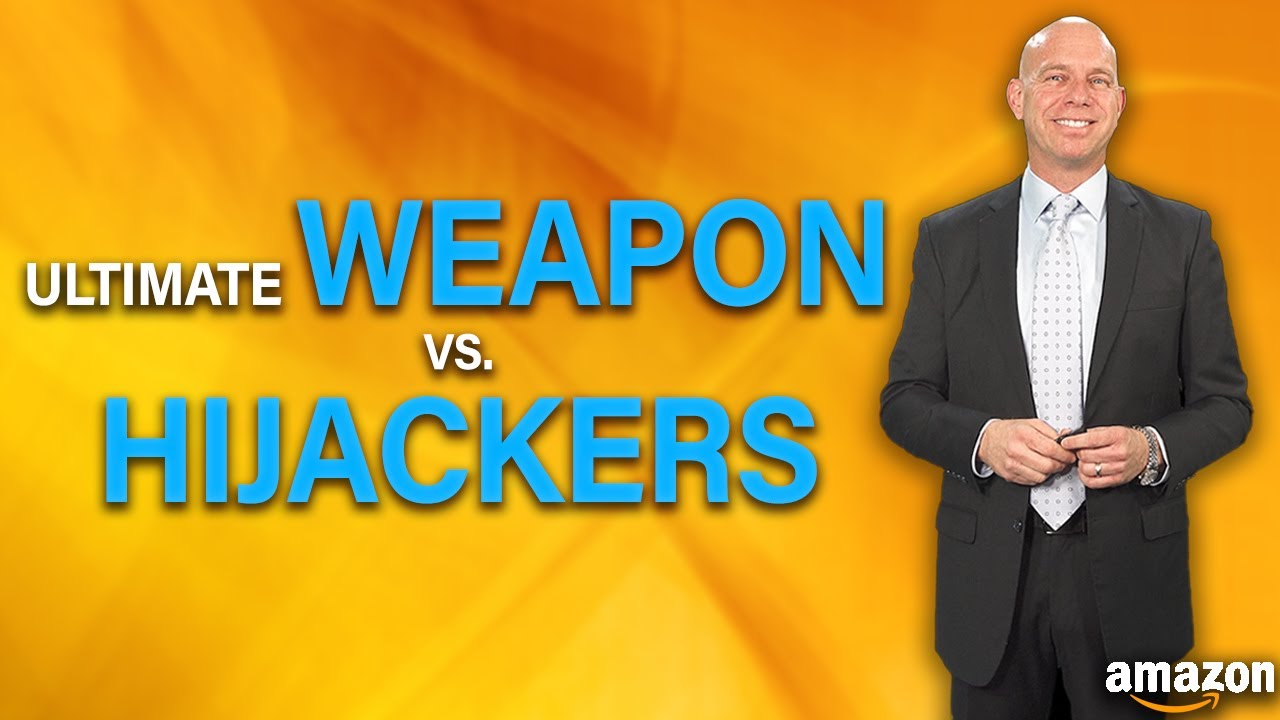
Intellectual property rights actions to take on some of the leading ecommerce websites such as Amazon, Alibaba, Etsy, eBay.
Learn practical methods to protect sales of branded merchandise online and submit enforcement actions when counterfeiters are selling products with your logos, names and other intellectual property rights that you own.
How can intellectual property rights be protected on Amazon, and in the case of infringement, what is the process of submitting a takedown request?
As one of the largest venues for the selection of goods on Earth, Amazon has a strong policy against infringement.
As per Amazon’s intellectual property policy, “Amazon does not allow listings that violate the intellectual property rights of brands or other rights owners.”
To enforce this policy, Amazon has a program called Amazon Brand Registry, with features that allow brands to better protect their intellectual property and create a more accurate and safe environment for Amazon’s customers.
Brand / Merchandise owners can report intellectual property infringement online through Amazon’s publicly available reporting form or by emailing Amazon’s support team.
Brand Registry 2.0 is Amazon’s platform used to “give [sellers] access to tools that enable them to more accurately represent [their] brand, find and report violations, and share information that can help [Amazon] proactively prevent violations.” [1]
To be eligible for Brand Registry, the [band, musician, company] must have a registered and active trademark in the country they enroll. The trademark for their brand must be in the form of a text-based mark or an image-based mark with words, numbers and letters. Eligible trademarks can have different classifications based on their issuing trademark office, depending on where the trademark is registered.
 Amazon accepts trademarks that have been registered with government trademark offices in the United States, Brazil, Canada, Mexico, Australia, India, Japan, France, Germany, Italy, Spain, the United Kingdom, and the European Union. Each of these countries have their own rules about filing for trademark and submitting takedown requests, and Amazon follows the trademark laws pursuant to the country where the sellers enroll.
Amazon accepts trademarks that have been registered with government trademark offices in the United States, Brazil, Canada, Mexico, Australia, India, Japan, France, Germany, Italy, Spain, the United Kingdom, and the European Union. Each of these countries have their own rules about filing for trademark and submitting takedown requests, and Amazon follows the trademark laws pursuant to the country where the sellers enroll.
Those who meet the eligibility requirements can sign into Brand Registry to create an account. Existing Vendors / Sellers on Amazon are directed to sign in using their seller or vendor central credentials.
For those who do not have an Amazon account, an account can be created for free. After signing in, the next step to create a Brand Registry account is to enroll your brand. To enroll, Amazon requests the name of the brand that has an active trademark, the associated government registered trademark number, a list of product categories in which the brand should be listed, and a list of countries where the brand is manufactured and distributed.
Amazon then reviews the information and contacts the trademark correspondent who is associated with the trademark being submitted to verify their identity. Once Amazon has verified the information submitted during enrollment, registrants are given full access to Brand Registry’s tools to help sellers protect their brand.
The main features of Amazon Brand Registry 2.0, according to its website are “tools that enable [its’ customers] to more accurately represent [their] brand, find and report violations, and share information that can help [Amazon] proactively prevent violations.” [2]
Brand registry gives customers more control over Amazon product pages that use their brand name, so customers are able to more accurately represent their brand. “Powerful search and report tools” [3] simplify the process of finding cases of potential infringement by allowing sellers to search for content in different Amazon stores from the same screen, to find Amazon product pages that match their product or logo, using images and to search for infringing content by bulk ASIN.
After performing a search, Brand Registry has simple and guided workflows for reporting infringement. In addition to Brand Registry’s standard brand protection measures, Brand Registry also has proactive protections that attempt to identify and remove potentially bad listings based on the information sellers provide to them.
In addition to the many brand protection services on Amazon’s Brand Registry 2.0, users can report alleged intellectual property infringements without a Brand Registry account. Amazon provides a publicly available form for reporting intellectual property infringements, such as copyright and trademark concerns on its website.
Amazon sellers who do not have a registered intellectual property right may use this form to report inappropriate listings, other sellers, policy violations and other complaints. Rights owners who have a registered trademark may also use this form, however Amazon directs them to enroll in Brand Registry on their website.
Sellers can also report claims of infringement by contacting Amazon by email. Emailing Amazon allows sellers to include attachments along with their claim of infringement. Some sellers prefer this method over submitting a form online because they can better support their claim.
Conclusion
Amazon’s takedown policy is undertaken primarily through its Brand Registry 2.0 platform. To register for this platform, a user account must be created by uploading proof of ownership of the brand in question and supporting documentation to enroll the brand. In addition to the many brand protection services on Amazon’s Brand Registry 2.0, sellers may report an intellectual property infringement by submitting a complaint through Amazon’s public form or by emailing their customer support team. These services reflect Amazon’s strong policy against intellectual property infringement and provide several methods of brand protection for musicians’ merchandise when selling on Amazon.
How can I stop counterfeiters online and how does reporting infringement on Alibaba compare to reporting infringement on Amazon?
Alibaba, like Amazon, has a strong policy against sellers who use their service to post and sell content which infringes on the trademarks, copyrights, or patents of others. Takedown requests for infringement are entertained pursuant to the territorial protection of IP rights offered by the reach of Alibaba’s platforms.
Alibaba’s Policy page presents the following example: “[Alibaba’s] China domestic platforms such as Taobao Marketplace accept take-down requests based on China registered intellectual property rights. [Their] international platforms such as Alibaba.com and AliExpress.com accept take-down requests based on international intellectual property rights.”
Alibaba does not discuss or elaborate on what “international intellectual property rights” it refers to in its policy.
To submit a complaint through the IPP platform, a new user will have to create an account on the IPP platform at https://ipp.alibabagroup.com/login.htm. After account creation, the user will then need to upload a proof of identity, such as a passport, a driver’s license, or, for an entity, a copy of the business registration certification or license.
Further, the user will need to specify what item or mark he or she would like to claim an IP right to, and will be required to upload a proof of that right, such as a copy of the official IP certificate held by the individual or, if the user is filing a claim on behalf of the IP holder, a letter of authorization written and issued by the rights holder. The user will then be free to submit an infringement claim.
Alibaba will investigate the situation and the offending product will either be removed from listings or, if the allegedly infringing party appeals, the contents of the appeal will be forwarded to the user. As stated above, Alibaba pledges to investigate all IP claims within 1-3 business days.
Although Alibaba has cleaned up counterfeiting and improved its IP platform to be more like Amazon, there are two key differences between reporting infringement on Alibaba then on Amazon.
First, reporting intellectual property complaints on Alibaba requires having a registered intellectual property right in China or under an international body in addition to any copyrights you may have in the United States. Unlike on Amazon, where anyone can submit a complaint through Amazon’s publicly available form, the process of reporting infringing material on Alibaba, requires documentation proving the intellectual property owner’s existence and the rights to the intellectual property in question. This verification process limits the number of people who can report infringement on Alibaba and makes it easier to report fraud on Amazon than on Alibaba.
Second, Alibaba’s China domestic website, Taobao follows Chinese intellectual property law and their international platforms, such as Alibaba.com and AlibabaExpress.com follow international intellectual property law. China is a “first to file” state. This means that the rights to a copyright, or trademark are granted to the first person to register the intellectual property right with the state. This contrasts with the United States which is a “first to use state.” Under U.S. law copyright rights are granted as soon as an original work is fixed in tangible form and trademark rights are granted to the first person to use the trademark in a market. This formality makes it necessary for businesses to file for intellectual property rights in China, even though they may already have a registered trademark or copyright in the United States or another country. This contrasts with Amazon where the intellectual property rights of most countries are accepted for proving intellectual property registration. Thus, bands that do not file their copyrights, or trademarks in China, or with an international board, will have intellectual property protections in the U.S. but will have no protections in China.
Conclusion
Alibaba’s takedown procedure is undertaken completely online through its IPP platform. In order to use this platform, a user account must be created and documents proving both identity and the ownership of IP rights must be uploaded. Although Alibaba made strides in improving its intellectual property platform and clean up counterfeiting it differs from Amazon in two key ways. Alibaba only allows those with registered intellectual property rights to report complaints of infringement.
Second, Alibaba follows Chinese and international intellectual property law which grants the intellectual property to the person who is “first to file,” and not the “first to use.” As a result of these differences bands considering offering their merchandise for sale on Alibaba’s website will be at the risk of encountering infringement on their brand unless they register their intellectual property in China to prevent these issues before they occur.
How can intellectual property rights be protected on eBay and in the case of infringement, what is the process of submitting a takedown request?
As per eBay’s intellectual property policy on its website “[eBay] take(s) protecting intellectual property rights, and maintaining a safe environment for our buyers and sellers, very seriously. As such, certain types of items, such as bootleg recordings, are not allowed on eBay, and others, such as celebrity autographs, have a range of restrictions around how they can be sold.” [4]
eBay’s User Agreement lists notice for claims of intellectual property violations and copyright infringement pursuant to §512© of Title 17 of the United States Code as cause for investigation. According to the User Agreement, eBay responds to notices of alleged infringement under the United States Digital Millennium Act. To provide further support in this area eBay’s Verified Rights Owner (VeRO) program works to ensure that listed items and content on their site or in their apps do not infringe upon the copyright, trademark, or certain other intellectual property rights of third parties.
What are eBay’s guidelines on intellectual property law?
eBay provides a list of items on its website that are restricted or prohibited because they may infringe on intellectual property or other proprietary rights of third parties. The following items are listed as restricted on the company’s website: “Academic, beta and OEM software; celebrity material, including autographed items & faces, names and signatures; media, including digitally delivered goods, movie prints, promotional items and recordable media.” [5]
Regarding, “Faces, names and signatures,” eBay states “The sale of a person’s image, name, and signature are protected by law and can’t be listed on eBay unless the person in question has given their permission.” [6]
To illustrate this rule, eBay provides an example of a t-shirt with images of a well-known band being sold on its website: “If the t-shirts are authorized by the band, then yes, [the seller] can list them on eBay. However, if the items are unofficial, they can’t be sold on [their] site without the band’s permission.” [7] As this example demonstrates, eBay restricts the sale of products sold on its website, by permitting the sale of authorized goods and prohibiting the sale of unauthorized goods.
 In addition to the items that are restricted, eBay prohibits items, such as: “Beta software; bootleg recordings; Items that may enable unauthorized copies, including: Hardware or software that would enable duplication of copy protected material, and modchips, game enhancers and boot disks; and Replicas, counterfeit items and unauthorized copies.” [8]
In addition to the items that are restricted, eBay prohibits items, such as: “Beta software; bootleg recordings; Items that may enable unauthorized copies, including: Hardware or software that would enable duplication of copy protected material, and modchips, game enhancers and boot disks; and Replicas, counterfeit items and unauthorized copies.” [8]
Upon clicking on the link to “Replicas, counterfeit items and unauthorized copies,” eBay tells sellers to “be sure [their] items aren’t replicas, counterfeits, or unauthorized copies.”[9] eBay provides the following example of what a fake product is on its website: “if a listing for a DVD of a popular TV series claims to be original, but is actually a pirated copy.” [10] As this example shows, eBay prohibits the sale of some items, such as counterfeit products, on its website, entirely.
eBay’s VeRO Program: Reporting listing violations:
eBay created the Verified Rights Owner (VeRO) program to allow intellectual property owners to report others who infringe on their intellectual property rights. According to the programs guidelines, on its eBay’s website “if an item or listing infringes on [the rights owner’s] intellectual property right, [the right’s owner] can report the listing by submitting a notice of claimed infringement.” [11] Once the report is processed eBay will provide the rights owner with more information on how to submit additional reports through the VeRO reporting tool.
Although eBay only allows property rights owner to file reports of claimed infringement, non-property rights owners’ can contact the rights owner and encourage them to report an infringement to eBay.
Some rights owners have created a participant page, so you can find out more information about their products and legal positions. eBay’s website lists some examples of information that can added to a VeRO participant profile: “For example you can provide information about, a list of your intellectual property, including brands, trademarks and copyrights, the potential consequences of infringing on a company’s IP rights, the conditions under which products bearing your IP may be sold, how to contact you with questions or concerns and other frequently asked questions.” [12] This information allows non-property rights owners to spot infringement and further supports eBay’s product monitoring efforts.
Mistaken Infringement Reports and DMCA counter notices:
EBay places the onus of reversing inaccurate reports of infringement on sellers. If a seller believes his or her listing was removed in error, he or she should contact the rights owner directly. If the rights owner has made a mistake, they should email eBay to retract their report.
Sellers who believe they received a copyright infringement notice under the DMCA because of a mistake or misidentification, are directed to submit a counter notice. EBay only accepts counter notices in response to notices of copyright infringement in compliance with the Digital Millennium Copyright Act. If the counter notice has all the information required of a valid counter notice required by the DMCA, eBay then contacts the VeRO participant and informs them that the listings will be reinstated after 10 days if the participant does not inform eBay they have filed an action seeking a court order to restrain the seller from listing the items. Counter notices may be filed by contacting eBay through their website.
Conclusion:
eBay takes maintaining a safe environment for buyers and sellers seriously. As such, eBay has the verified rights (VeRO) program and the VeRO reporting tool to allow rights owners to file reports of claimed infringement and non-rights owners to contact the rights owner to report a claim as well. A band considering selling merchandise on eBay should seek to comply with eBay’s intellectual property policy to avoid receiving notices of infringement and to keep their selling privileges active. Should a seller receive a notice of infringement from eBay, he or she should contact the rights owner directly and request they email eBay to retract the complaint. If the seller receives a notice for copyright infringement the seller may be able to have the listing reinstated by submitting a DMCA counter notice.
How can intellectual property rights be protected on Etsy and in the case of infringement, what is the process of submitting a takedown request?
Intellectual property law can be confusing but knowing the law can help you protect your brand when selling online. As a venue for artists, designers, and creators, Etsy takes intellectual property rights seriously.
 As per the company’s intellectual property policy on its website, “Etsy adopted [their] intellectual property policy in accordance with industry best practices, general U.S. intellectual property laws, and the Digital Millennium Copyright Act.” [13]
As per the company’s intellectual property policy on its website, “Etsy adopted [their] intellectual property policy in accordance with industry best practices, general U.S. intellectual property laws, and the Digital Millennium Copyright Act.” [13]
This subsection of the chapter discusses how sellers can protect their brands on Etsy through registered copyrights and trademarks, and explains how Etsy’s addresses allegations of infringement, how authorized sellers can submit proper notices of infringement, and how Etsy sellers can respond when their shops are affected by a notice.
Legal Framework:
Etsy’s intellectual property policy follows the Digital Millennium Copyright Act. Among other things, the DMCA provides a safe harbor to protect online venues from liability that can occur as a result of copyright infringement. If a person submits a proper notice of copyright infringement, the online venue must act expeditiously to disable access to the infringing material cited in the notice. So long as the online venue removes the allegedly infringing material in a timely manner, they cannot be held liable for the infringing content under the DMCA.
Stop Counterfeiters Online – Reporting Infringement:
According to Etsy’s website the company “strives to respond quickly when [they] receive proper notice of intellectual property infringement by removing or disabling access to the allegedly infringing material.” [14] When Etsy removes a or disables access to a vendor in response to a complaint, Etsy makes a reasonable attempt to contact the allegedly infringing party, provide information about the notice and removal, and in the cases of copyright infringement, provide information about how to file a counternotice. In some cases, Etsy may provide the allegedly infringing party with a copy of the notice.
DMCA Counter Notices:
Sellers who believe they received a copyright infringement notice under the DMCA as a result of a mistake or misidentification, are directed to submit a counter notice through the company’s website. Etsy accepts counter notices for copyright takedowns only.
Sellers may submit a counter notice by clicking the unique URL in the email sent by Etsy notifying them of the copyright infringement notice and takedown. The unique URL links to a form that may be used to submit a counter notice to one of Etsy’s representatives. If the counter notice has all the information required by the DMCA, Etsy then contacts both the member submitting the counter notice and the authorized agent who submitted the copyright complaint. The party who submitted the complaint to file an action in court to restrain the allegedly infringing member from reactivating the material. If Etsy does not receive notice of an action seeking a court order against the allegedly infringing member, then the material mentioned in the counter notice may be reactivated. Reactivating the material before the 10 days have passed may result in account termination.
Repeat Infringement:
As per the company’s website, “Etsy terminates account privileges of members that are subject to repeat notices of intellectual property infringement in appropriate circumstances and at Etsy’s discretion.”[15] Etsy only provides general information about the enforcement actions it takes against a member who receives repeated notices of infringement. As Etsy states on its website that “When there is a legal issue with a shop, Etsy’s Legal Support team privately reaches out with information.” [16]
Conclusion:
Etsy’s intellectual property policy follows U.S. intellectual property laws and the industry standard. When authorized sellers submit legitimate notices of copyright infringement, Etsy strives to take down the infringing material expeditiously. Members who receive a notice of infringement may respond by submitting a counter notice through the company’s website. If the allegedly infringing member receives multiple notices of infringement his or her account privileges may be terminated.
A band selling merchandise on Etsy can avoid having their privileges terminated by complying with Etsy’s intellectual property policy. Should a seller fall victim to an illegitimate notice of infringement they should dispute the claim by submitting a DMCA counter notice or seek other methods of invalidating the claim made against them.
Stop Counterfeiters Online
[1] Amazon Brand Registry, Benefits, Amazon.com (2017-2018), http://brandservices.amazon.com/benefits.
[2]Amazon Brand Registry, supra note 1.
[3]Amazon Brand Registry, supra note 1.
[4] Intellectual Property and the VeRO Program, https://www.ebay.com/help/policies/listing-policies/selling-policies/intellectual-property-vero-program?id=4349#section2
[5] Intellectual Property and the VeRO Program, supra note 1.
[6] Faces, names, and signatures policy, https://www.ebay.com/help/policies/prohibited-restricted-items/faces-names-signatures-policy?id=4291.
[7] Faces, names and signatures, supra note 2.
[8] Intellectual property and the VeRO program, supra note 1.
[9] Replicas, counterfeit items, and unauthorized copies policy, https://www.ebay.com/help/policies/prohibited-restricted-items/replicas-counterfeit-items-unauthorized-copies-policy?id=4276.
[10] Replicas, counterfeit items, and unauthorized copies policy,supra note 5.
[11] Intellectual property and the VeRO program, supra note 1.
[12] VeRO participant profiles, https://pages.ebay.com/seller-center/listing-and-marketing/verified-rights-owner-program.html#m17-1-tb3.
[13] Intellectual Property Policy, https://www.etsy.com/legal/ip/
[14] Notices of Intellectual Property Infringement, supra note 1.
[15] Repeat Infringement, supra note 1.
[16] Intellectual Property: 4 Key Questions Answered, https://www.etsy.com/seller-handbook/article/intellectual-property-4-key-questions/22451909389








